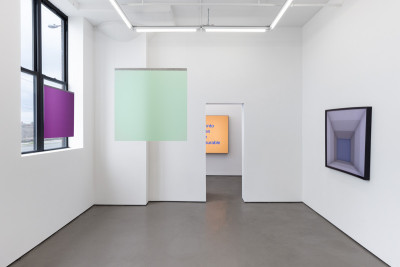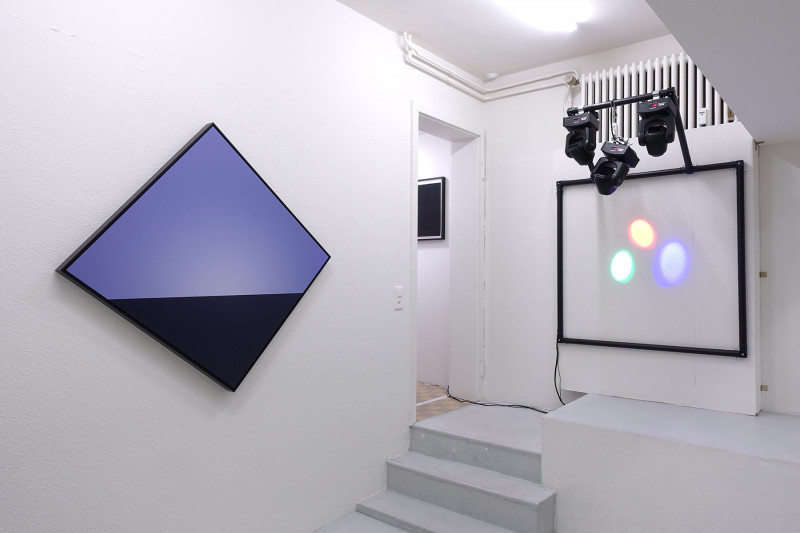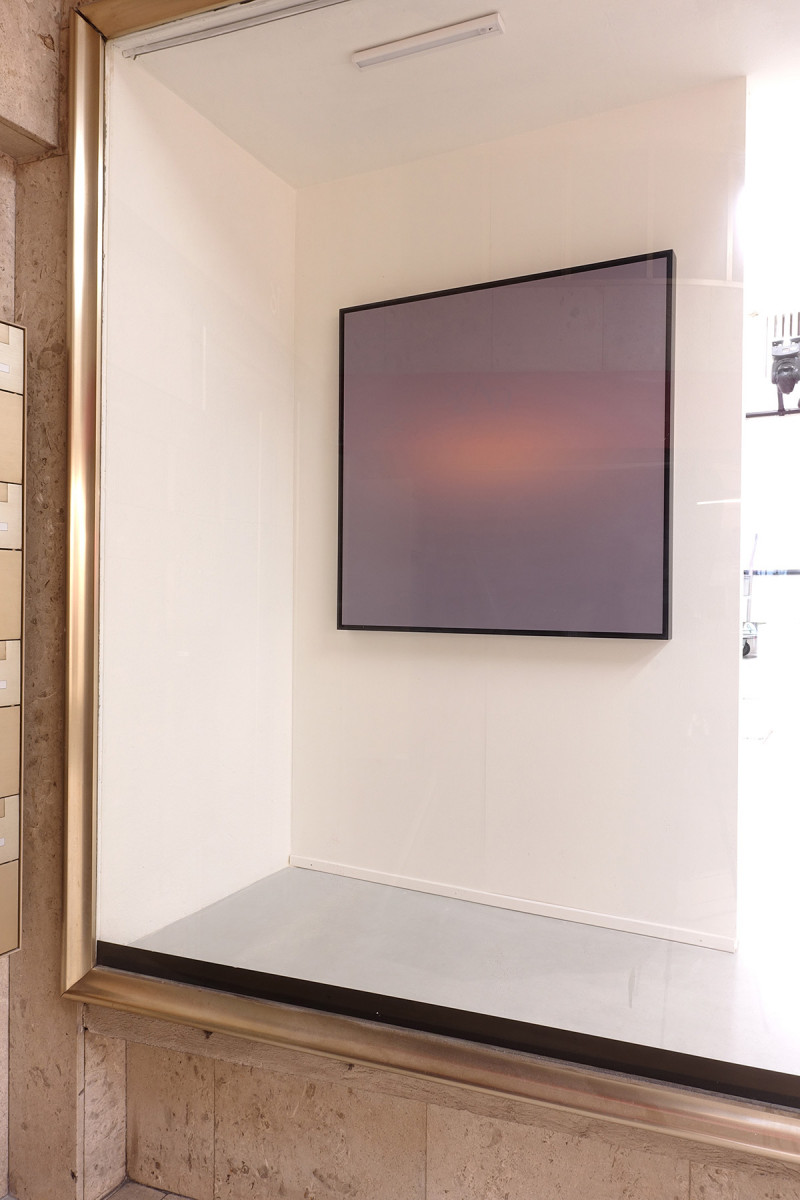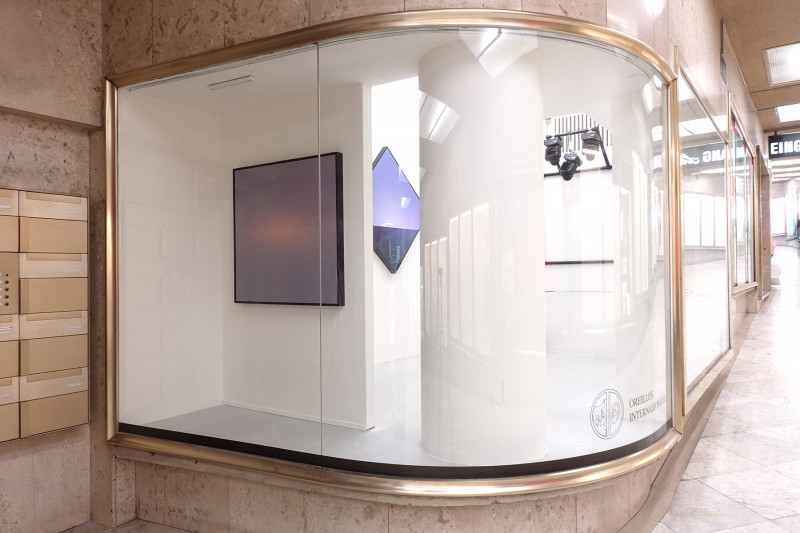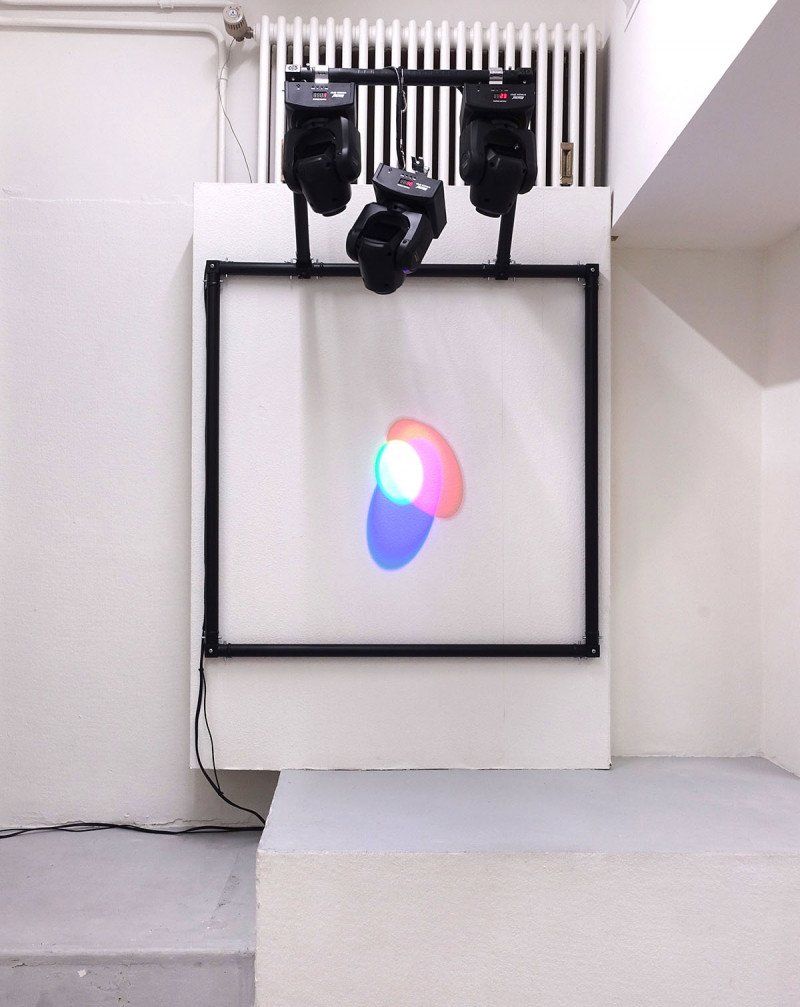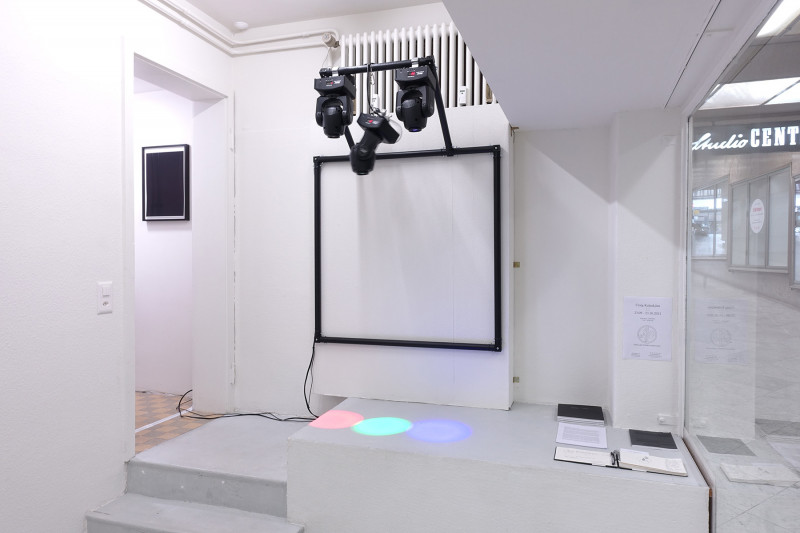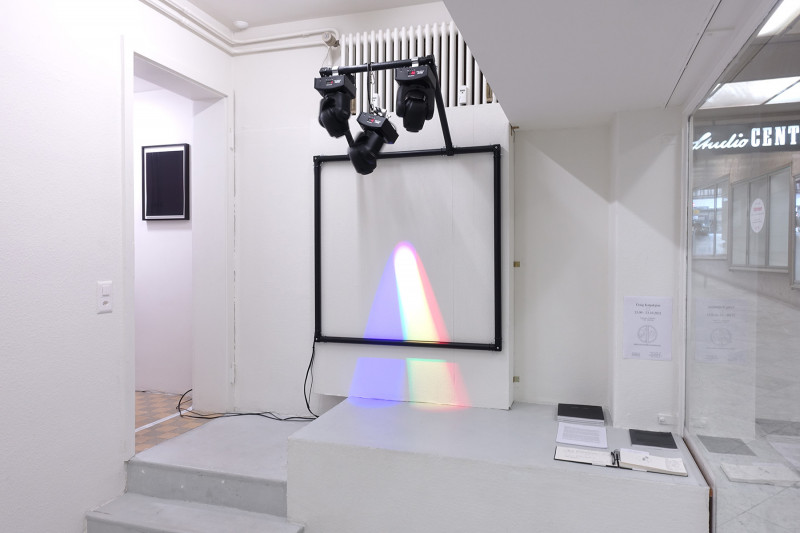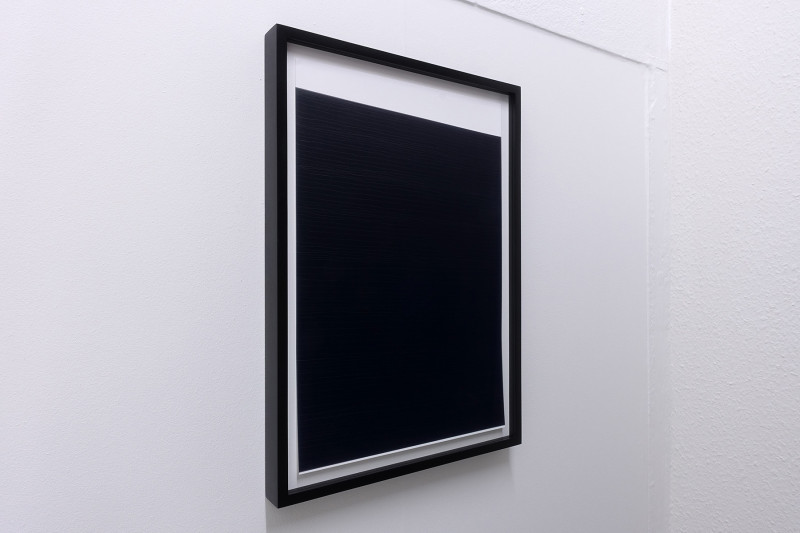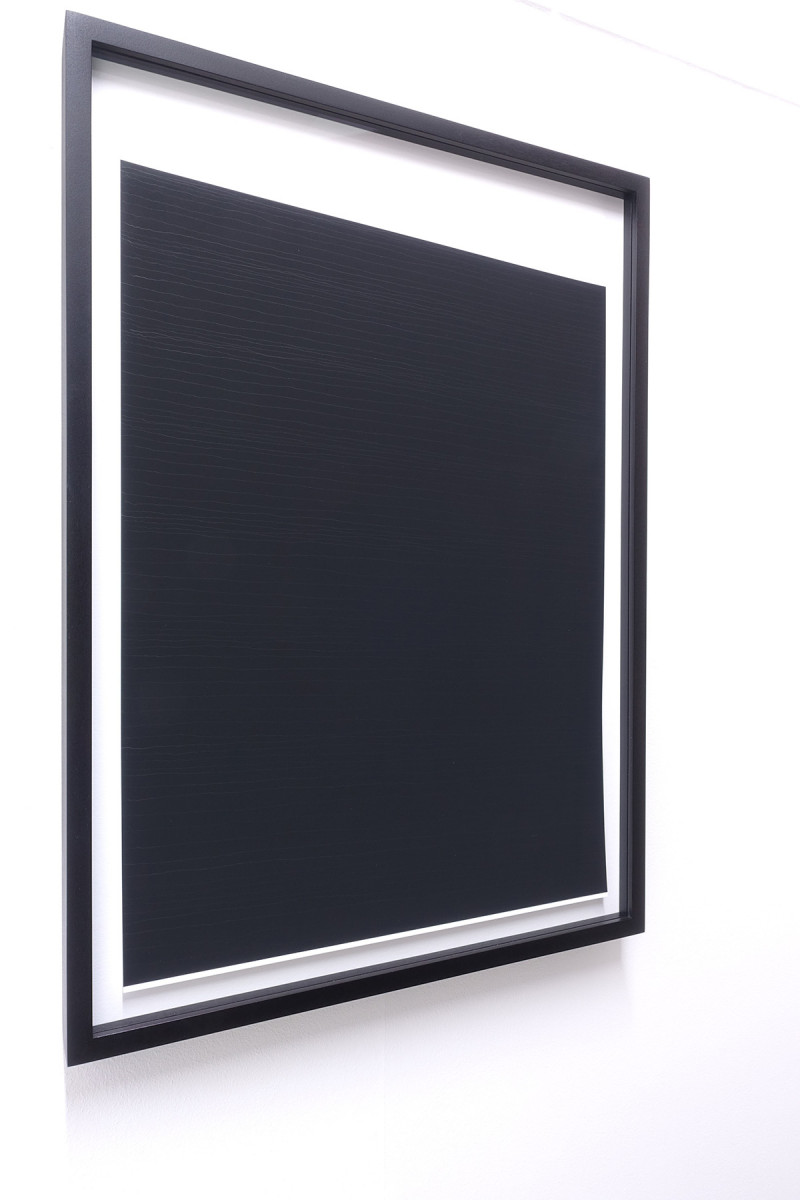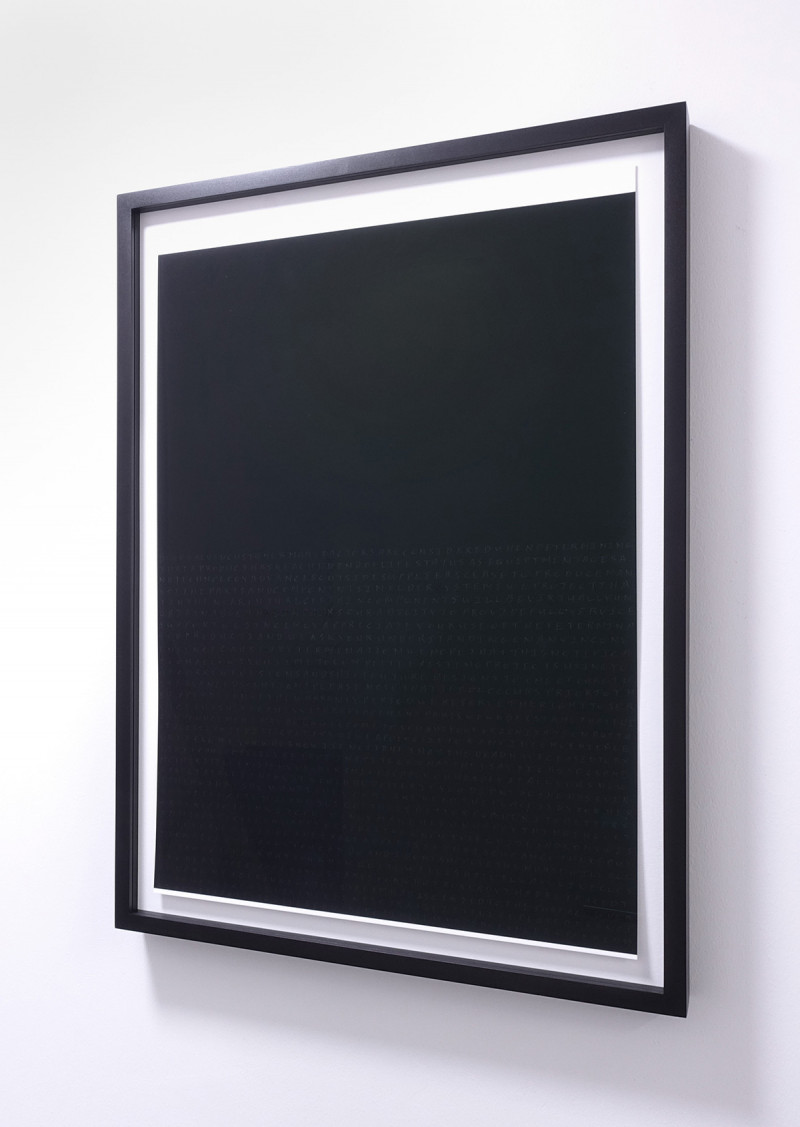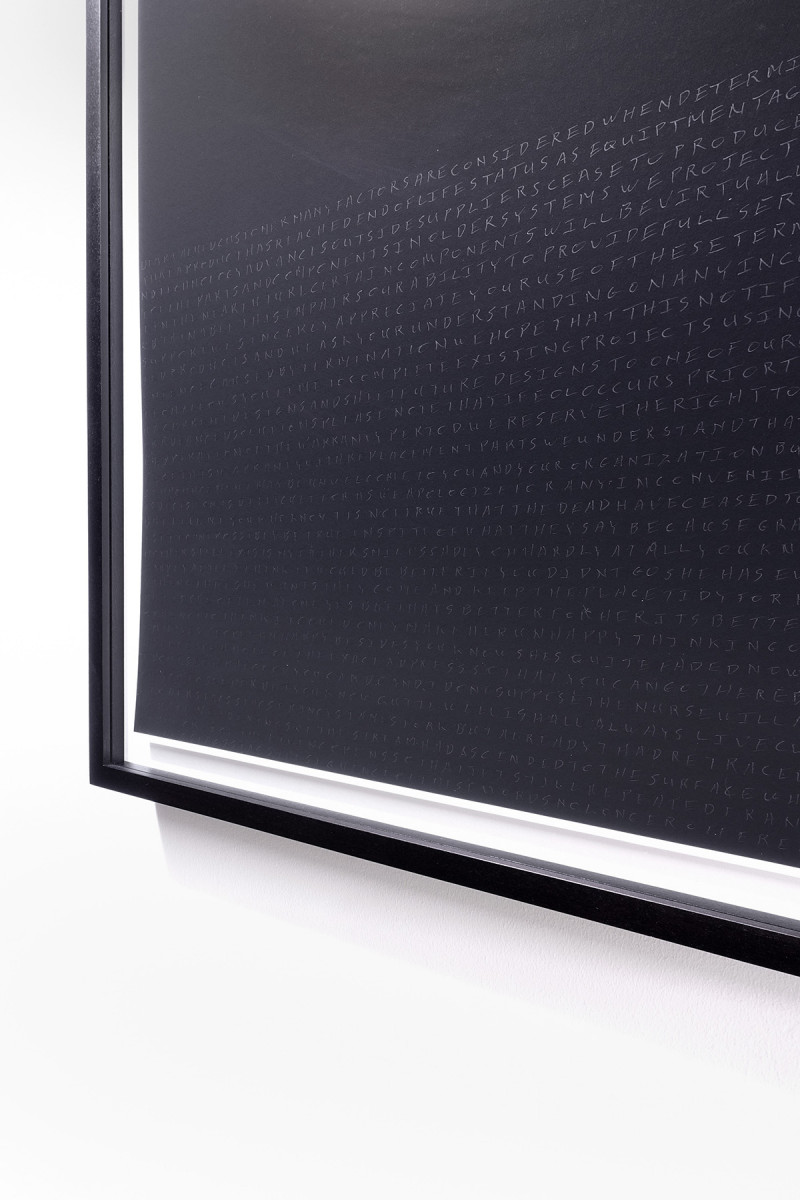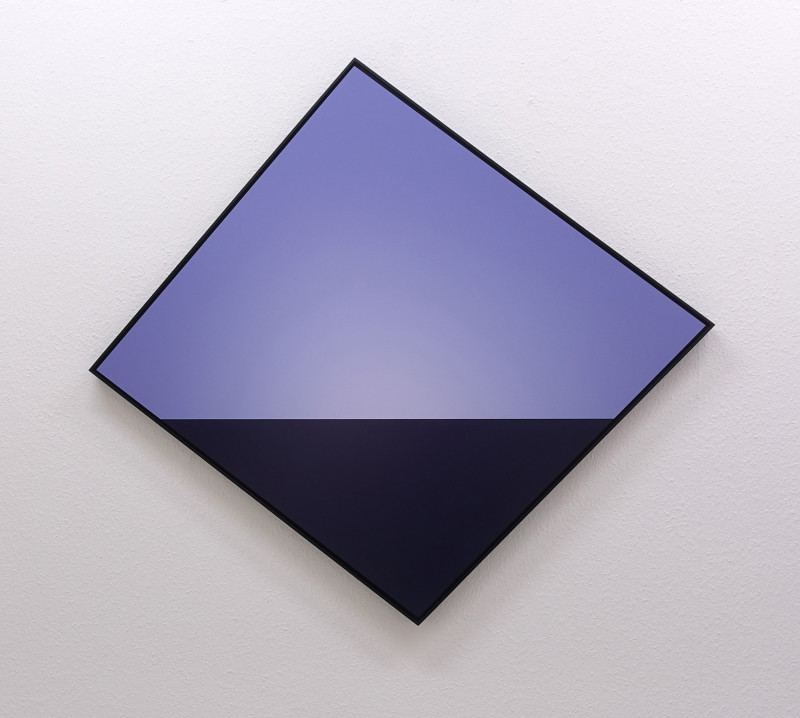
Craig Kalpakjian at Oreilles Internaxionales
The horizon line cuts a perplexing figure. It is at once a visual anchor—a reference point for nautical navigators or perspectival painters—and an abstraction, its distance indeterminate and its apparent flatness obscuring the curvature of the earth. Real and arbitrary, its ultimate effect depends on the viewer’s expectations and conditions of perception. In this sense, the horizon is something of a synecdoche for the work of American artist Craig Kalpakjian, who, for the past thirty years, has pressured those very effects and conditions through prescient, rigorous engagements with both physical and digital media, and techniques of both control and resistance.
Kalkpakjian’s first exhibition at Oreilles Internaxionales features four artworks that trade in aspects of the horizon’s logic. One of them, an untitled work in UV pigment on dibond, even appears to model a horizon traversing the lower third of an irregular quadrilateral. Beneath the line sits a solid, dark blue plane; above it, a lighter expanse, a subtle flare emanating from below. If Untitled (Natural Beauty #0007) evokes a seascape, it likewise insists upon the horizon’s abstractness—its incommensurability with real-world referents. Indeed, any hint of naturalism, as in much of Kalpakjian’s work dating to the 1990s, derives from computer processes; any perceived space, no matter how immersive, exists only as an image on the surface of its substrate, which, in this case—an odd shape, hung at an odd angle—further heightens the horizon’s shiftiness. Parallel to the floor but skewed with respect to its surroundings, Kalpakjian’s line questions its nominal pretense, i.e., its horizontality.
Adept at digital modeling, Kalpakjian keeps the techniques and discourses of painting in play. Destabilizing the categories of horizontal and vertical, flatness and depth, his pseudo-horizon pushes Untitled away from Renaissance scenes and toward the modernism of artists like Josef Albers (whose work Kalpakjian explored in his “L7” series of the 2010s) and Piet Mondrian. For Mondrian, horizontal and vertical lines locked together to create a sort of pulse; aimed at plastic and perceptual equilibrium, his matrices nevertheless induced disorientation, too. Two works dilate these pictorial maneuvers, pondering their relevance to contemporary visual regimes and practices. A drawing, Untitled (Linear Wave), displays a deformed mathematical grid, its complexity indexed by its handmade imprecision; a second work in UV pigment, Untitled (Natural Beauty #0003), occupies a traditional square format yet offers a pale, amorphous form, something like a cloud—the sign which, for Hubert Damisch, marks “the limit of representation, of what is representable.” Since the Renaissance, pictures have served to fix power in the form of mapping or registration; as this conjuncture becomes ever-more evident, Kalpakjian identifies alternatives—instances where strategic images meet their limits, break down, fail to lock subjects into place.
Color Management (RGB), a wall sculpture composed of three automated spotlights and a square truss frame, binds Kalpakjian’s critique of registration to the regulating technologies that enable it. Here, too, function turns to disfunction: the middle light dangles precariously from its “safety cable,” its quasi-organic movements untethered from its programming. The resulting chance color combinations thus materialize as momentary abstractions, less redolent of Albers than his Bauhaus colleague László Moholy-Nagy. While Kalpakjian’s technical détournement seems to liberate the device, the square format still contains the “free” movement, pointing viewers toward the ambient boundaries that persist in what Gilles Deleuze termed “societies of control.” One of this concept’s key interpreters, Kalpakjian enacts perceptual provocations to alert viewers of their societal place. And, as they move through the gallery, viewers of his exhibition find themselves duly contained, their image flattened and mediated by the windowpane for curious passersby—a coincidence that befits Kalpakjian’s characteristic balance of trenchant critique and dark humor.
—Joe Bucciero
